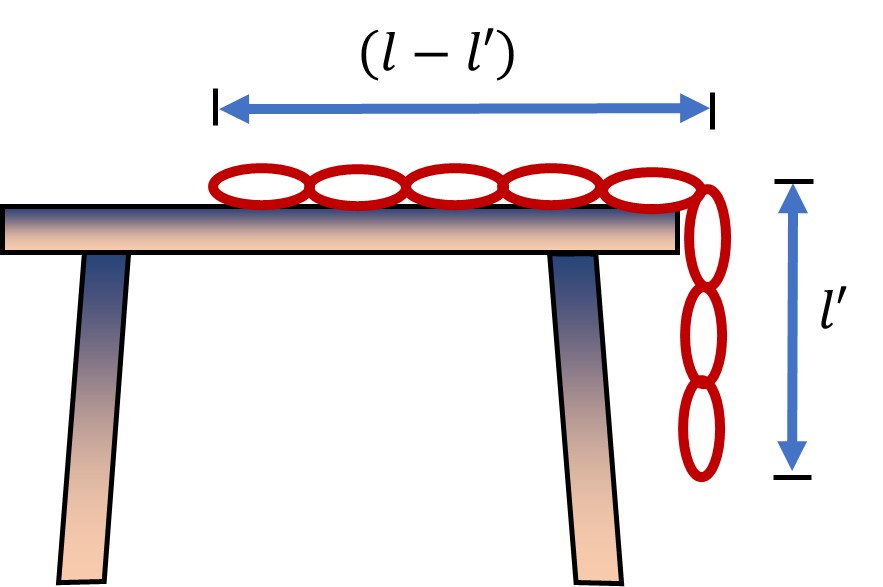Maximum Length Of Hung Chain - Practice Questions & MCQ
Quick Facts
-
6 Questions around this concept.
Solve by difficulty
A heavy uniform chain lies on a horizontal table top. If the coefficient of friction between the chain and the table surface is 0.25, then the maximum fraction of the length of the chain that can hang over one edge of the table is
Length of chain is $L$ and coefficient of static friction is $\mu$. Calculate the maximum length of the chain which can be hung from the table without sliding. Maximum length of hung chain

A uniform rope of length I lies on a table. If the coefficient of friction is $\mu$ then the maximum length $x$ of the part of this rope which can overhang from the edge of the table without sliding down is
Latest: Free All-India JEE Main 2026 Mock Test - Attempt Now
JEE Main Sample Papers: Physics | Chemistry | Maths | Top 30 Repeated Questions
JEE Main QP & Mock: Previous 10 Year Questions | Chapter Wise PYQs | Mock test Series
JEE Main Most Scoring Concept: January 2025 Session | April 2025 Session | Overall
The length of the chain is 1 m and the coefficient of static friction is $\mu$. Calculate the maximum length of chain which can be hung from the table without sliding $(\mu=0.5)$
A uniform rope of total length $l$ is at rest on a table with fraction $f$ of its length hanging (see figure). If the coefficient of friction between the table and the chain is $\mu$ then
Concepts Covered - 1
A uniform chain of length l is placed on the table in such a manner that its l' part is hanging over the edge of the table without sliding.


$
\mu=\frac{m_2}{m_1}=\frac{\text { mass hanging from table }}{\text { mass on table }}
$
The chain will have uniform linear density.
So the ratio of mass and ratio of length for any part of the chain will be equal.
$
\begin{aligned}
& \mu=\frac{\text { length of part hanging from table }}{\text { length of part on table }}=\frac{l^{\prime}}{l-l^{\prime}} \\
& l^{\prime}=\frac{\mu l}{(\mu+1)}
\end{aligned}
$
Where $l=$ length of chain
$l^{\prime}=$ chain hanging
$
\left(l-l^{\prime}\right)=\text { chain lying on table }
$
Study it with Videos
"Stay in the loop. Receive exam news, study resources, and expert advice!"

